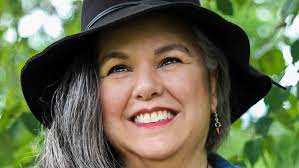Truth and Reconciliation is more than words. They must be equaled with action. As a means of acknowledging the land and people where we are privileged to live and work, we sought out the wisdom of Lynn Gehl, an Algonquin Anishinaabe-kwe from the Ottawa River Valley. She shared this land acknowledgement below. In 2017 she won an Ontario Court of Appeal case on sex discrimination in The Indian Act, and is an outspoken critic of the Algonquin land claims process.
Lynn’s publications include:
Gehl v. Canada: Challenging Sex Discrmination in the Indian Act
Claiming Anishinaabe: Decolonizing the Human Spirit
You can reach Lynn, and see more of her work, at lynngehl.com.
 Ottawa is Algonquin Anishinaabe traditional territory. The Algonquin Nation were one of the first Indigenous Nations that Champlain recorded as he travelled up the Kichesippi, now called the Ottawa River. Algonquin territory consists of 25 million acres inclusive of rivers, lakes, boreal forests, rock, trees, four legged, winged, and finned. Through the creation of Upper and Lower Canada, now Ontario and Quebec, and through the French surrendering and ceding land that they did not own to the British, the Algonquin Anishinaabe have been divided along the very river that once united us. Through the overlay of Canada the nation state and the imposition of a provincial federal order, the Algonquin are now divided by language, law, and religion. While 16 million acres is in Quebec, 9 million is in Ontario.
Ottawa is Algonquin Anishinaabe traditional territory. The Algonquin Nation were one of the first Indigenous Nations that Champlain recorded as he travelled up the Kichesippi, now called the Ottawa River. Algonquin territory consists of 25 million acres inclusive of rivers, lakes, boreal forests, rock, trees, four legged, winged, and finned. Through the creation of Upper and Lower Canada, now Ontario and Quebec, and through the French surrendering and ceding land that they did not own to the British, the Algonquin Anishinaabe have been divided along the very river that once united us. Through the overlay of Canada the nation state and the imposition of a provincial federal order, the Algonquin are now divided by language, law, and religion. While 16 million acres is in Quebec, 9 million is in Ontario.
Through processes of genocide inherent in colonization, which continues today, the Algonquin have been relegated to small plots of land. There are ten federally recognized First Nation communities made up of registered status members: one in Ontario and nine in Quebec. As suggested these communities reside on only small fractions of the larger Algonquin Anishinaabe traditional territory. Pikwàkanagàn First Nation’s land base consists of a mere 1,561 acres; Barriere Lake only 59; while Wolf Lake has been denied a land base altogether. There are also many communities in Ontario, made up of mostly non-status members, that have been more formally organized to accommodate the federal government’s need to define Indigenous rights in narrow terms and they all lack their own collective land base known as reserve lands. Today there are more non-status than status Algonquin and many reside outside of our traditional territory.
The Kichesippi has been subjected to the logging, hydroelectric, nuclear power, and the fishing and sport hunting industries. These industries have clogged the Great River, flooded important landscapes, and are currently dumping radio-active particles in the river. What is more, the nuclear industry is warming up the river using the water to cool down fission nuclear reactors.
Although the Algonquin Anishinaabeg were emissaries during the 1764 Treaty at Niagara, and many of the men fought on the side of the British during the 1776 American revolution, and during WW1 and WW2, Algonquin were and are continually denied the jurisdiction of their land and resources.
Indigenous knowledge philosophy is a life way that situates humans within a broader context of the natural world versus a religion selectively practiced. Within this philosophy, the Four Sacred Elements ‒ Water, Rock, Wind, and Fire ‒ are valued as more intelligent. As such, places where they intersect are sacred. In addition, while many people think Indigenous people of Turtle Island lack a tradition of symbolic literacy, in actuality the Anishinaabeg inscribed stories, knowledge, and important messages within the land and waterscapes of their territory. Akikpautik is where Creator placed the First Sacred Pipe, the ultimate expression of reconciliation between nations, humans, and the natural world.





